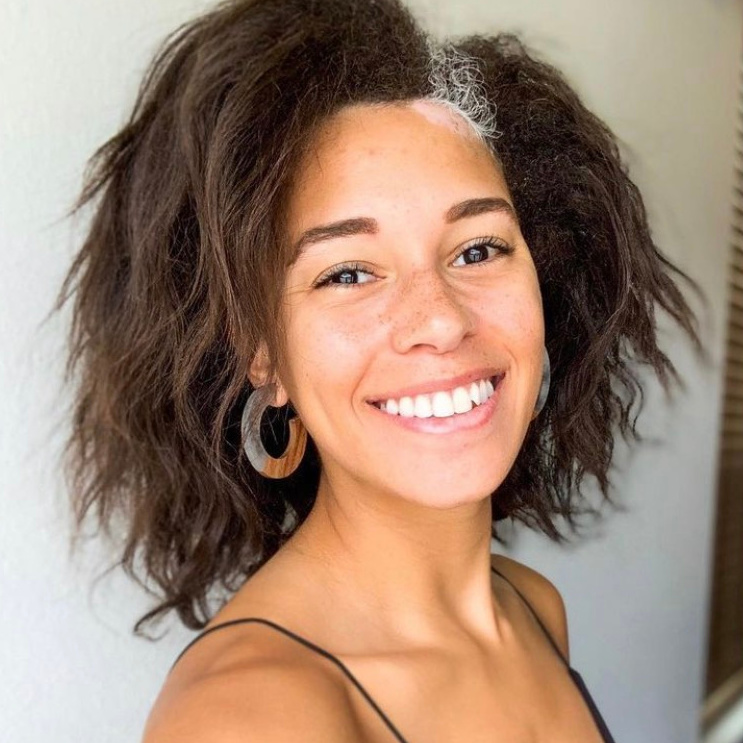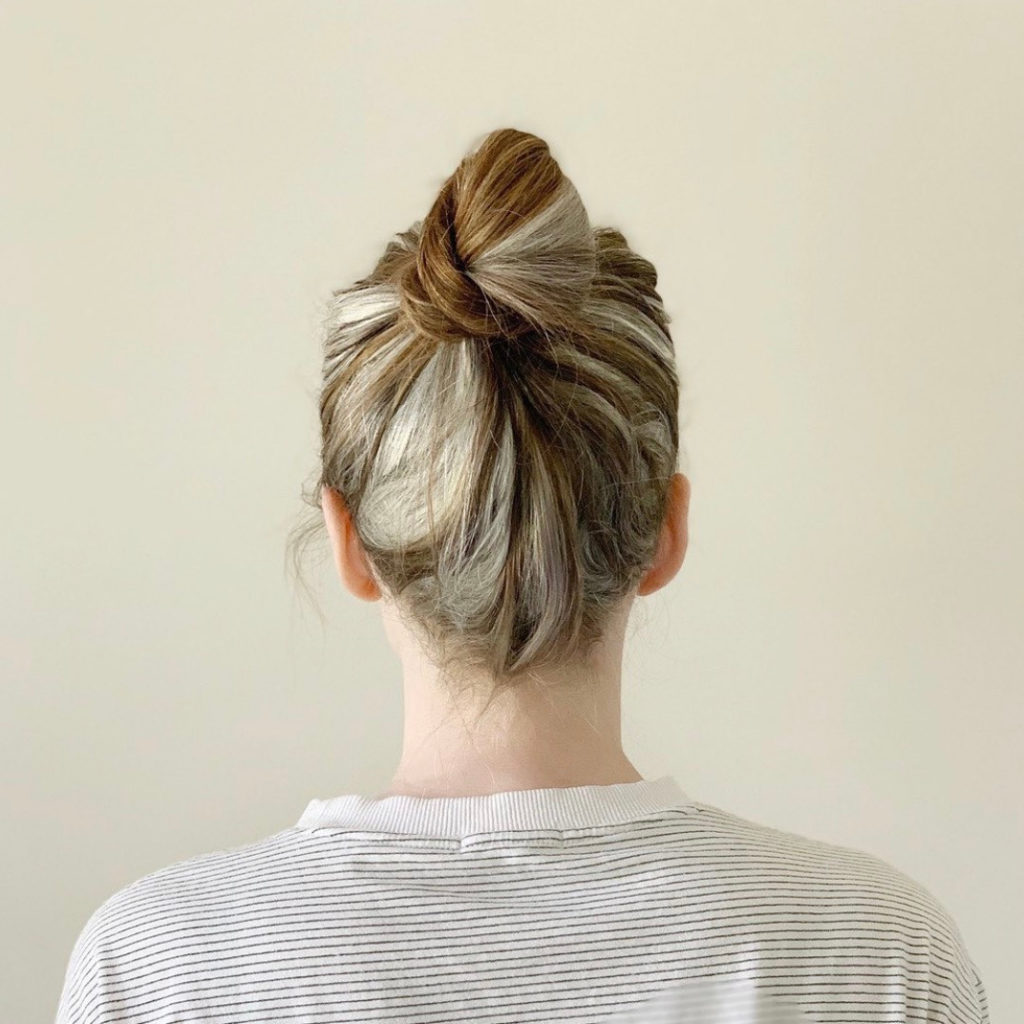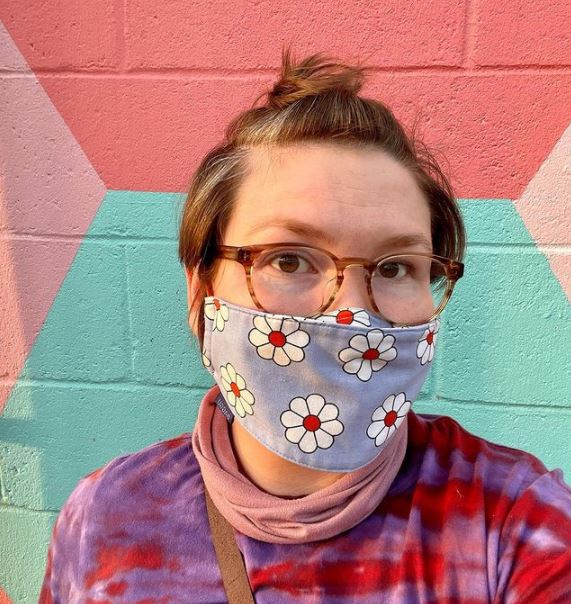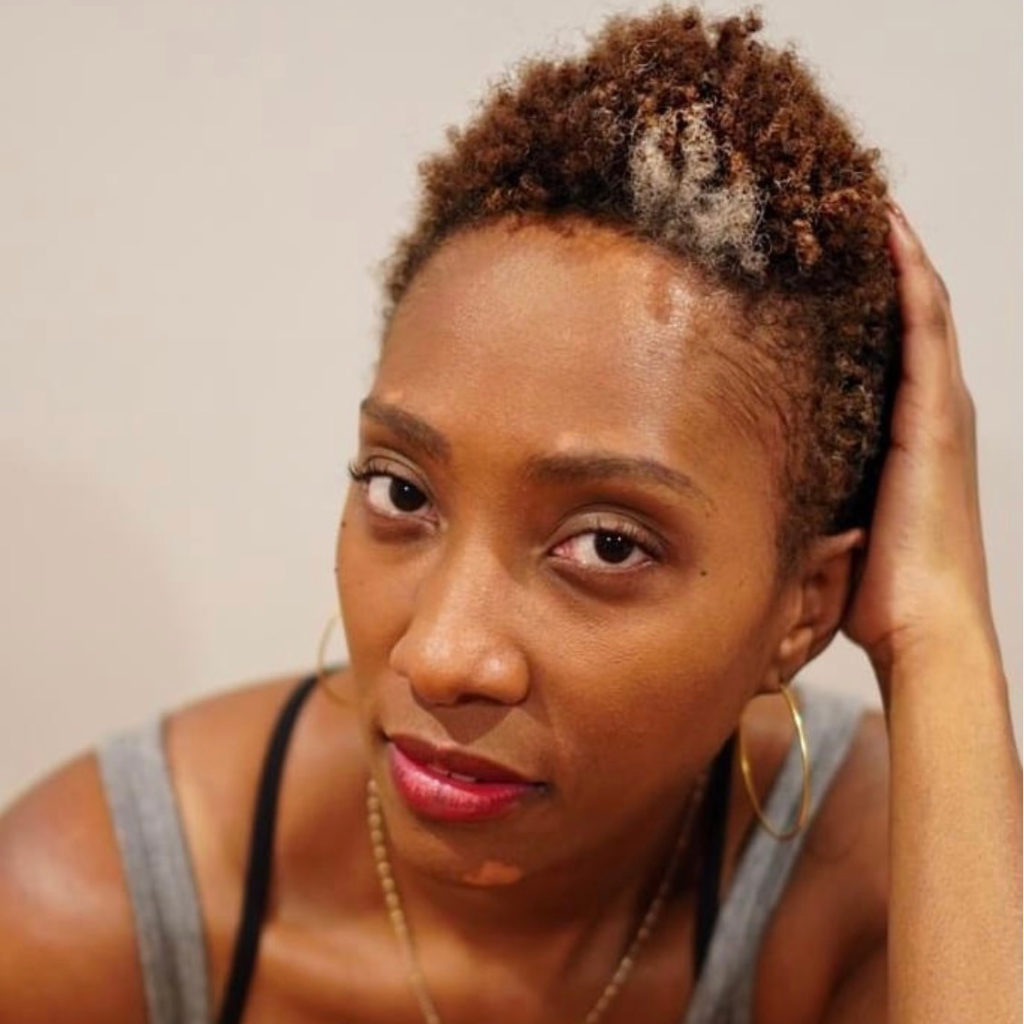These 5 Women Have Vitiligo Hair – and Are Rocking It

Vitiligo is perhaps most known as a skin condition – resulting in milky white patches of skin. But did you know vitiligo can also impact your hair? That’s right – vitiligo can turn your eyelashes, eyebrows and even your scalp hair white too. That’s because melanocytes, the cells responsible for giving our skin color, also live in hair follicles and are responsible for giving hair color too. When vitiligo causes a loss of pigment in the melanocytes in hair follicles – hair can turn white just like skin.
While some with vitiligo choose to dye or cover their white locks, others choose to embrace the streaks. Here are five women who have white hair caused by vitiligo – and are rocking it.

Nicole Hunter | Des Moines, IA | Living with vitiligo for 6 years
Vitiligo to me is art! It can be complicated, beautiful, difficult to understand and always unique. When my vitiligo started spreading to my hair, I was embarrassed. I actually started parting my hair in the middle so that it wouldn’t be seen. Then I realized my spot wasn’t showing and I LOVE my spot. So, I went back to the side part and I’ve learned to love and embrace my super cool streak. I’m an elementary teacher and honestly children have helped me to love my skin. My students always think my spot is amazing or awesome. They say and ask the funniest things about my vitiligo. It usually leads to a super cool discussion about melanin and self-acceptance.

Erika Page | Virginia, USA | Living with vitiligo for 24 years
“I first got vitiligo when I was seven years old and over the course of 20 years, I lost 100% of my skin’s pigment to the condition. I thought I was done – and then my hair started turning white. I was already dying it to cover some grays, so I kept trying to hide it. The stubborn streaks wouldn’t cooperate, and it got to be too difficult to keep them hidden. A year ago, I decided to stop dying my hair to let my vitiligo streaks grow in – and started lightening the rest of my hair to help it transition. If I lost all of my skin’s pigment, maybe I’ll lose all of my hair’s pigment too. Today I don’t think I would mind – I’m embracing it.”

Elizabeth Witcher | Oregon, USA | Living with vitiligo for 29 years
“I’ve had a few patches – such as the back of my neck and at the part of my hair – for pretty much my whole adult life. Then lots of scattered hairs if I look closely. I think vitiligo streaks in the hair are so unique and pretty. I really hope that one day my hair completely “greys” out. I’m at the point of loving my skin. I think vitiligo is beautiful.”

Kourtney Holmes | New York, USA | Living with vitiligo for 7 years
“My hair started changing well before I ever saw my first vitiligo spot at 25 years old. It started to gray in one spot only. The women in my family had their hair prematurely turn gray so I embraced it – I thought it was pretty cool that I had this beautiful white patch in the front of my hair. Even when I colored my hair, I always made sure that the signature white patch went untouched.
Fast Forward to getting my first spot at age 33. At each visit to the dermatologist’s office, they would touch my white patch and inform me that that was likely the onset of my vitiligo. For a time, what I had embraced with such pride, I began to dislike. I disliked it because it was linked to my skin and my loss of pigment and I was so uncomfortable. But overtime, I began to love my hair and my skin as I began to embrace my vitiligo. It’s mine!”
A patient advocate, editor, and sought-after leader within the vitiligo community, Erika Page is also the Founder and CEO of Living Dappled. After getting vitiligo at the age of seven, she lost 100% of her skin’s pigment over 25 years. She fought her own mental and emotional battle to overcome her insecurities and embrace the skin she was in and today seeks to help other women reclaim their lives with this condition.


